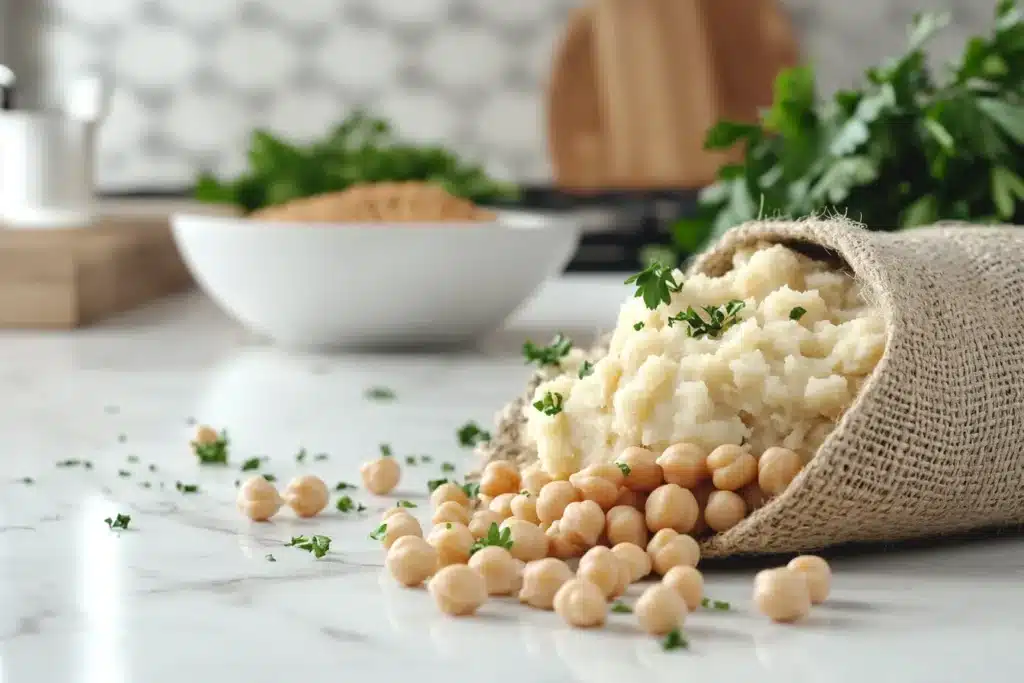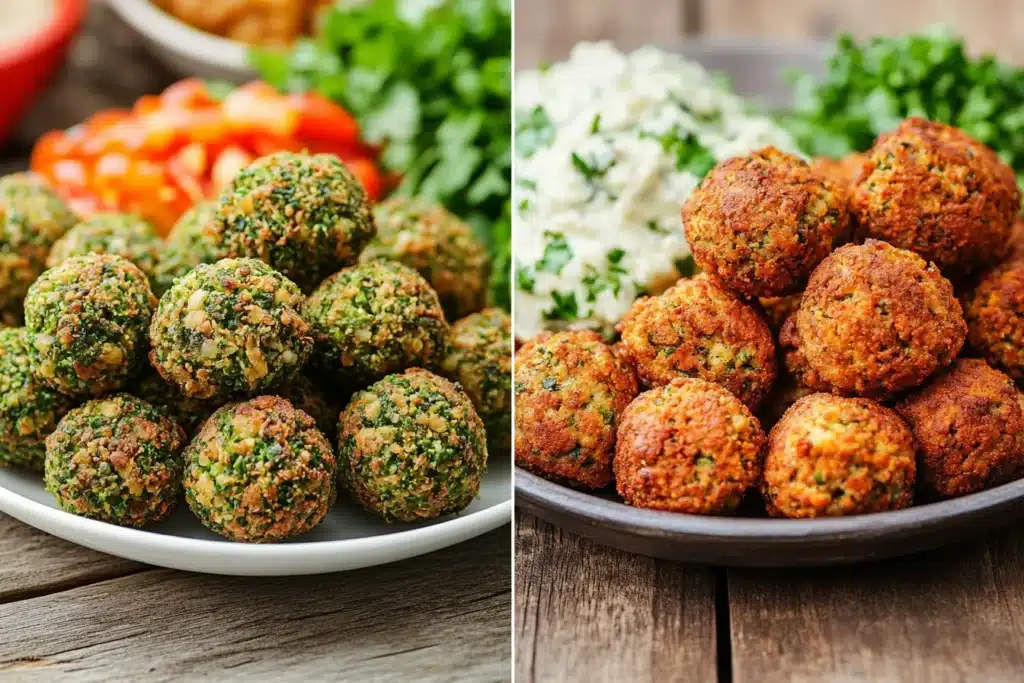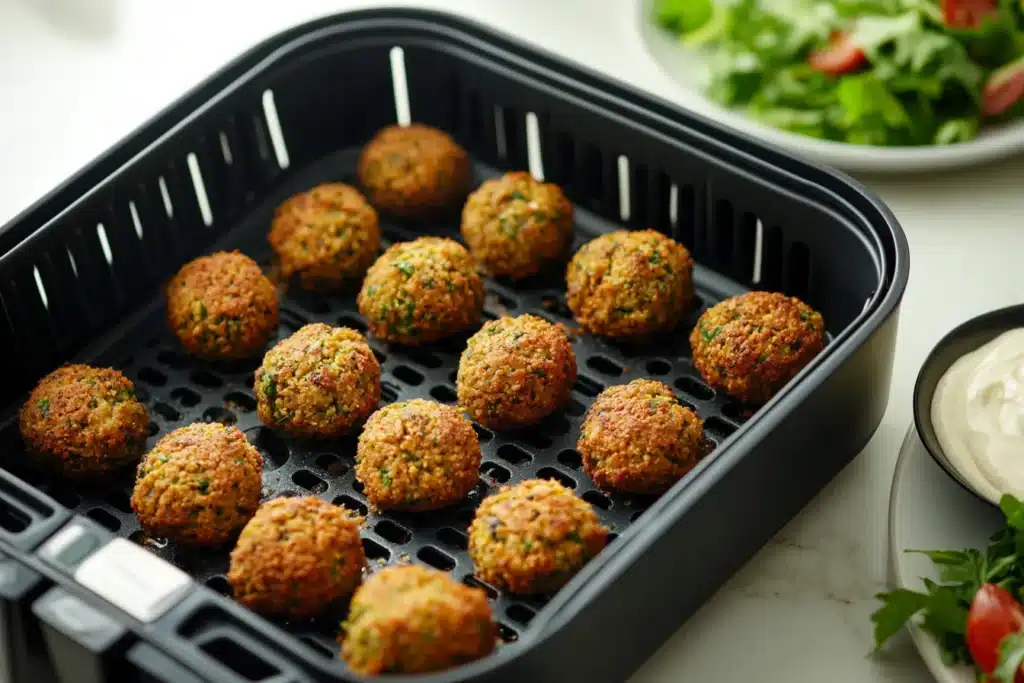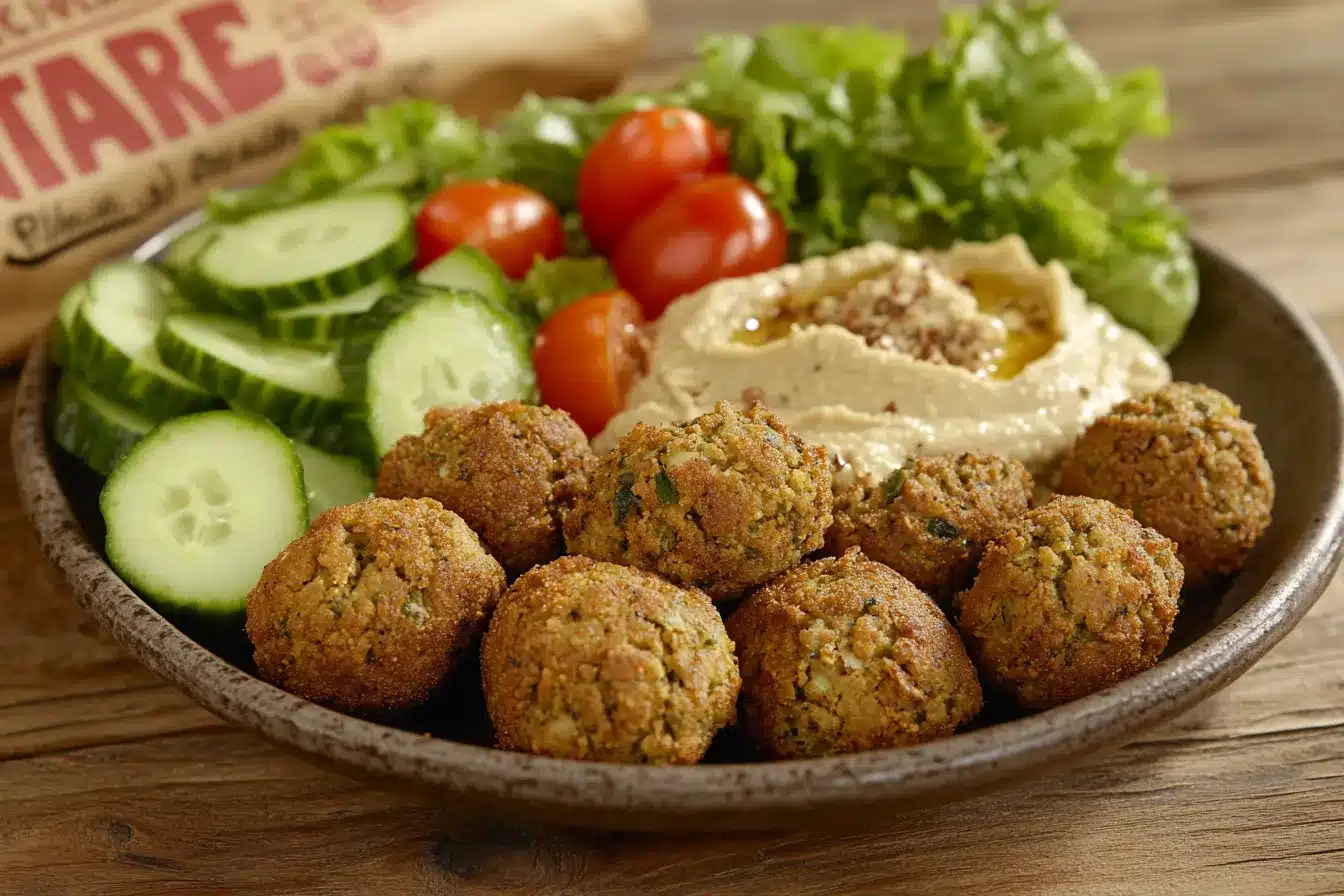Table of contents
Falafel, that golden-brown, crispy delight, has certainly made its mark on the culinary scene. Once a street food staple of the Middle East, it’s now a global phenomenon, gracing the shelves of supermarkets everywhere. And naturally, Trader Joe’s, with its knack for unique and convenient eats, offers its own take on this beloved dish. But the burning question remains: “Is Trader Joe’s falafel healthy?”. It’s a question worth exploring, as we navigate the sea of food choices. In this article, we’ll unpack what’s truly inside those convenient little packages, delving into the ingredients, dissecting the nutritional value, and comparing it to homemade alternatives.
Breaking Down the Ingredients: What’s in Trader Joe’s Falafel?
Before we can definitively determine if Trader Joe’s falafel is a healthy option, we need to understand its composition. It’s time to play food detective and carefully scrutinize the ingredient list. So, let’s break down its main components. Additionally, understanding the ingredients is the foundation for determining its nutritional value.
The Legume Base: Chickpeas are the Star
Just like traditional falafel, Trader Joe’s version is also built upon a foundation of chickpeas. These legumes are a fantastic source of plant-based protein and fiber, making them a solid starting point for a potentially healthy dish. However, it’s important to remember that the way these chickpeas are processed and combined with other ingredients can significantly impact the overall health profile. Therefore, processing methods are important to take into account when assessing a food’s health benefits.

The Supporting Cast: Vegetables, Herbs, and Spices
Besides the chickpeas, Trader Joe’s falafel also includes a mix of vegetables, herbs, and spices. You’ll find ingredients like onions, garlic, parsley, and cilantro, all contributing to both the flavor and the nutritional content. Also, the specific spices used can influence the taste and potentially add health benefits. For example, cumin and coriander are known for their antioxidant properties.
The Binders and Fillers: What Holds It All Together?
Now, things can become a little more complex. Trader Joe’s uses ingredients like fava bean flour and modified food starch as binders. While fava bean flour is another legume-based ingredient, modified food starch is often used to help the falafel hold its shape, but it doesn’t offer a great deal of nutritional value. Consequently, it’s vital to be aware of the role of these binders in the final product.
The Oil and Cooking Method: A Key Consideration
Finally, we need to consider the cooking method. Trader Joe’s falafel comes pre-cooked, typically fried, and contains canola oil, which can affect the overall fat content. Consequently, the type of oil and how it’s used plays a big part in whether the falafel is healthy. Therefore, the cooking method should not be overlooked in our analysis.
Nutritional Breakdown: Is Trader Joe’s Falafel healthy for You?
Okay, so we’ve analyzed the ingredients, but what about the actual nutrition? Let’s delve into the nutritional data and see what Trader Joe’s falafel brings to the table. Keep in mind, these numbers can vary slightly based on product changes, but this table offers a general overview:
| Nutrient | Amount per Serving (4 pieces, 100g) |
| Calories | 230 kcal |
| Total Fat | 13g |
| Saturated Fat | 1.5g |
| Trans Fat | 0g |
| Cholesterol | 0mg |
| Sodium | 340mg |
| Total Carbohydrate | 22g |
| Dietary Fiber | 6g |
| Total Sugars | 2g |
| Protein | 7g |
| Vitamin A | 4% DV |
| Vitamin C | 2% DV |
| Calcium | 2% DV |
| Iron | 8% DV |
Note: % Daily Value (DV) is based on a 2,000-calorie diet.
Therefore, based on this data, let’s explore some key takeaways. In addition, it’s always important to consider these numbers in the context of your overall diet.
Calorie and Fat Content: Moderation is Key
One serving of Trader Joe’s falafel (100g or about 4 pieces) contains 230 calories and 13g of fat. While some fat is necessary for a balanced diet, it’s important to note that the fat content is relatively significant. Also, it’s vital to consider how these fit within your daily calorie and fat goals. Therefore, those monitoring fat intake should exercise portion control.
Protein and Fiber: The Good Stuff
The good news is, Trader Joe’s falafel provides a decent amount of protein and fiber. The protein contributes to satiety, while the fiber is vital for digestion. In addition, these two components make it more filling. Since these are important for overall health, the falafel does have nutritional benefits.
Sodium Content: Watch Out
The sodium content is also worth noting. At 340mg per serving, it’s not exactly low. Consequently, individuals watching their sodium intake should be mindful of how much falafel they’re consuming. Therefore, people with hypertension or heart conditions need to be careful about sodium levels in their food.
Vitamins and Minerals: Not a Powerhouse
While the falafel does contain some vitamins and minerals, it isn’t particularly rich in them. It contributes to daily intake, but it’s not a major source. However, this doesn’t make it unhealthy, it just means you have to focus on including a wide variety of vegetables in your diet too. Additionally, a balanced diet should always include a variety of nutrient-rich foods.
Comparing Trader Joe’s Falafel to Homemade: What’s the Difference?

Now that we understand the composition of Trader Joe’s falafel, how does it compare to a homemade version? Well, there are several key differences to consider. Besides, understanding these differences is essential to make an informed choice.
Ingredient Control: The Advantage of Homemade
The biggest advantage of making falafel at home is the control you have over the ingredients. You can choose healthier oil options (like olive or avocado oil), control the sodium content, and add extra vegetables or herbs. Also, you have control over whether to bake it or fry it. Furthermore, you can experiment with different spices to create the perfect flavor profile.
Freshness and Additives: What’s Really in Your Falafel
Homemade falafel is typically made with fresh ingredients and without any preservatives or artificial additives. Trader Joe’s falafel, like other packaged foods, may contain preservatives to maintain freshness. Therefore, if you are concerned about these additives, homemade is your best bet. On the other hand, this also means that homemade falafel won’t last as long as store bought.
Time and Convenience: The Appeal of Trader Joe’s
Of course, the convenience of Trader Joe’s falafel is a major draw. It’s pre-made, ready to heat up, and saves you valuable time in the kitchen. This is a major benefit for those with busy schedules. While homemade might be healthier, it undoubtedly takes more time and effort. Therefore, it’s a question of priorities between convenience and control over ingredients.
Cost Comparison: Which is More Affordable?
Generally, homemade falafel is more affordable as dried chickpeas are very budget-friendly. Trader Joe’s falafel, on the other hand, comes with a premium for convenience. Therefore, if you’re on a tight budget, making it from scratch is a great option. Also, bulk buying the ingredients for homemade falafel can further lower the cost.
Making Trader Joe’s Falafel Healthier: Tips and Tricks
Is Trader Joe’s Falafel healthy?
Even though Trader Joe’s falafel might not be the absolute healthiest option available, there are several ways you can make it more nutritious. Here are a few tips to keep in mind: Additionally, these tips help to balance the nutritional profile.
Baking or Air Frying: Reduce the Oil
Instead of deep-frying or pan-frying the Trader Joe’s falafel, try baking or air frying it. This method will significantly reduce the amount of added oil and fat. Additionally, air frying can give you that crispy texture without the extra calories. Since both are healthier than deep frying, you can reduce your fat intake.

Serving Suggestions: Add More Veggies and Fiber
Pair Trader Joe’s falafel with a side salad or a variety of roasted vegetables. This will boost the overall nutritional value of your meal. Also, you can add a whole-wheat pita for additional fiber. Therefore, combining the falafel with a variety of plant-based foods is the best way to enhance the nutritional value of your meal.
Control Your Portion Size: Moderation is Key
Be mindful of your portion sizes. Eating four falafel pieces is one serving, so you need to be mindful not to overdo it. Since Trader Joe’s falafel can be relatively high in fat, moderation is key. Therefore, it’s essential to keep serving sizes in mind when planning your meal.
Choose Your Sauces Wisely: Opt for Healthy Options
Avoid high-fat sauces like creamy dressings and dips. Instead, opt for lighter options like tahini, hummus, or a low-fat yogurt sauce. Also, a squeeze of lemon juice is another low-calorie option. Furthermore, fresh herbs can also add flavor without additional calories.

Who Should Be Careful with Trader Joe’s Falafel?
While Trader Joe’s falafel can be part of a balanced diet, some people should be mindful of their intake or avoid it altogether. Consequently, it is essential to know when this food is less suitable.
Individuals Watching Sodium Intake:
As Trader Joe’s falafel is relatively high in sodium, people with high blood pressure should be cautious about consuming too much. They might prefer making it at home and using less salt. Therefore, making homemade versions allows for better control over sodium content.
People Sensitive to Certain Ingredients:
Individuals who are sensitive to certain ingredients, such as canola oil or specific spices, should also be careful. Always check the ingredient list before consuming any packaged food. Besides, those with legume allergies should avoid falafel altogether. Additionally, it is always best to consult with a healthcare provider to be sure of any dietary needs.
Those Trying to Lose Weight:
Since Trader Joe’s falafel is relatively high in calories and fat, people trying to lose weight should be mindful of their portions and cooking methods. Therefore, they should consider the overall caloric intake and make adjustments in their diet. On the other hand, it doesn’t mean you need to completely avoid it, just to eat it in moderation.
Exploring Additional Aspects of Trader Joe’s Falafel
Now, let’s explore some additional aspects of Trader Joe’s falafel to fully understand its place in our diets.
The Role of Processing:
Food processing can influence the nutrient content of food. Trader Joe’s falafel, being a pre-made product, is subject to various processing methods that can alter its nutritional profile. While processing is necessary for preservation, it can also impact the level of vitamins and minerals.
The Impact of Cooking Methods:
Earlier, we discussed how baking or air frying Trader Joe’s falafel can be healthier than pan frying or deep-frying. Different cooking methods impact the fat content and the final calorie count of the product. Therefore, choosing healthy cooking methods is always important.
The Importance of a Balanced Diet:
No single food, including Trader Joe’s falafel, can be a complete source of nutrients. A balanced diet is the key to overall health. Therefore, you must focus on including a variety of fruits, vegetables, whole grains, and lean proteins in your diet.
Considering Dietary Needs:
Additionally, it’s important to consider your specific dietary needs and preferences when choosing foods. If you have any health concerns, it’s best to consult with a doctor or nutritionist. Since everyone has different needs, it is best to consider personalized dietary requirements.
Common Questions About Trader Joe’s Falafel: FAQs
Let’s tackle some of the common questions that people often have about Trader Joe’s falafel :
What is a falafel made of?
Falafel is a delicious blend of chickpeas or fava beans, aromatic herbs like parsley and cilantro, savory garlic and onions, and a mix of warm spices. Check out our guide to its core ingredients!
Is Trader Joe’s falafel vegan?
Yes, Trader Joe’s falafel is vegan as it is made without any animal products. Therefore, it is a good option for those on a vegan diet. Not only that, it also provides a good source of plant-based protein. Learn more about Trader Joe’s falafel!
Is Trader Joe’s falafel gluten-free?
No, Trader Joe’s falafel is not gluten-free. It contains fava bean flour and modified food starch which may contain gluten. Therefore, individuals who are gluten intolerant should avoid it. Additionally, be sure to always read the ingredient list on the packaging.
How do you cook Trader Joe’s falafel?
Trader Joe’s falafel can be heated up in the microwave, oven, or skillet. However, for a crispier result, it’s recommended to bake or air fry. Since air frying gives that crispy effect, it’s a good healthier option.
Can I freeze Trader Joe’s falafel?
Yes, Trader Joe’s falafel can be frozen. You can freeze it right in its package. Just be sure to cook them fully, once defrosted. Also, freezing won’t significantly alter the taste or texture.
How long does Trader Joe’s falafel last in the fridge?
Once opened, it will last for 3-5 days in the refrigerator, but always follow the expiration date. Of course, make sure to store it in an airtight container. Additionally, properly stored food will last longer.
Does Trader Joe’s falafel contain preservatives?
Yes, Trader Joe’s falafel does contain some preservatives to maintain its shelf life. However, they’re generally safe to consume for most people. Therefore, if you are concerned you can research those preservatives or choose a homemade version.
Conclusion
So, “Is Trader Joe’s falafel healthy?” The answer, like with most foods, is nuanced. While it does offer some nutritional benefits, like protein and fiber, it also contains a fair amount of fat and sodium. Therefore, it can be part of a balanced diet if you enjoy it in moderation and with mindful preparation methods. Above all, the healthiest approach is to combine Trader Joe’s falafel with a variety of vegetables, choose healthy sauces, and keep track of your portion sizes. Finally, always remember that a homemade version provides you with the greatest control over ingredients and your overall health outcomes.

